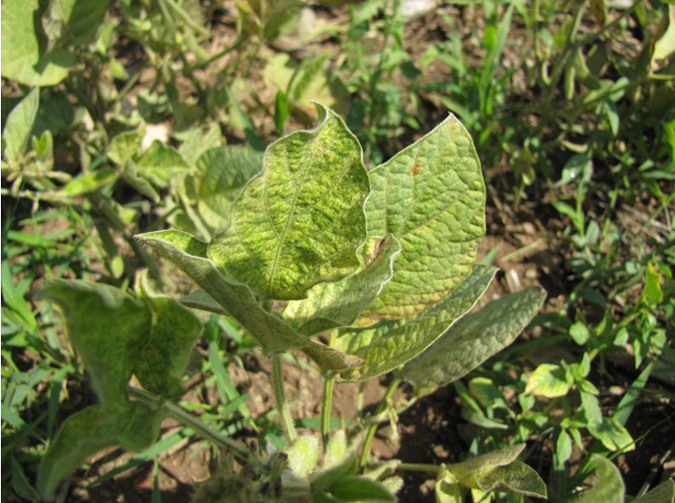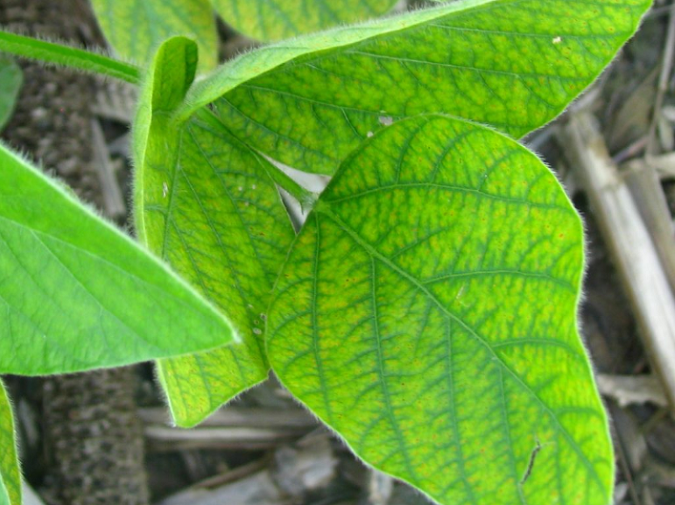Delayed Planting
The spring of 2019 was unprecedented in Ontario. Cool temperatures and constant rainfall delayed planting of much of the crop. Most soybeans were planted in June and for some growers it was July. There are often pockets of the province that can’t plant due to wet soil conditions, but we have not experienced such a wide geography struggling to plant before. How will this late planting impact soybeans? The good news is that soybeans are amazingly resilient and can adapt to the growing season due to the photoperiod effect. When days begin to shorten in the fall soybean plants will naturally speed up maturity, so they can finish normally before a killing frost. Typically, a one-month delay in planting results in only a 10-day delay at harvest. However, this ability to compensate comes at a price. Soybeans planted during the first week of May typically spend about 60 days in the reproductive phase of development (R1-R6). This is when the majority of yield is made. Beans planted during the first week of June will speed through these same stages in about 45 days. This cut’s yield potential. Excellent summer growing conditions and an open fall can make up for some of this lost potential. Best management practices to minimize plant stress become even more important in a year like 2019 when plants have less time to recover from diseases, insects, and other stresses.
Insects
Significant soybean aphid (SBA) populations have not been found to date in Ontario. Reports of infestations in the Mid-west may result in aphid migrants arriving here over the next weeks via storm fronts. SBA management is essential, especially when conditions turn dry since yield losses are highest when plants are already stressed. Since plants are small this year extra attention will be necessary to minimize injury. The Aphid Advisor app is available to help decide if a spray is required or whether the natural enemies can control them for you. Go to http://www.aphidapp.com/ to download the app for free. Japanese beetles may also become an issue as populations are abundant this year.
To date spider mite damage has been limited, but field scouting will be important as hot, dry weather favors mite development. Mites feed on individual plant cells from the underside of leaves leaving stipples. Severe stippling causes yellowing, curling and bronzing of leaves (Figure 1.). Spider mites usually start on the edge of the field, but wind can carry them to any part of the field. Fields that are close to neighboring winter wheat stubble, hay fields and no-till fields are more at risk. Four or more mites per leaflet or one severely damaged leaf per plant prior to pod fill indicates that control is required.

Figure 1. Spider Mite damage on soybean leaf showing stipple leaf margins, yellowing and bronzing of leaf
Nutrient Deficiencies
When soybeans are planted into less than ideal conditions there may be seed slot smearing and compaction. This impedes root development which increases nutrient deficiencies. Potash (K) and Manganese (Mn) deficiency are widespread this year. These two nutrient deficiencies have unique leaf symptoms. K deficient leaves turn yellow along the leaf margins (Figure 2.) while Mn deficient leaves turn yellow across the whole leaf except for the veins which remain green (Figure 3.). A soil test is the only reliable way to know if a field is truly low in K or only showing stress-induced potash deficiencies. It’s also important to note that K deficiency symptoms may indicate soybean cyst nematode (SCN) feeding on the roots. Check roots and when taking soil samples ask the lab to also test for SCN.
Figure 2. Potassium deficient soybean leaf showing yellow leaf margins

Figure 3. Magnesium deficient soybean leaf showing green veins and yellowing leaf
Symptoms of Mn deficiency are interveinal chlorosis (yellowing) while the leaf veins remain green. Mn symptoms will appear on the younger leaves first. One of the most significant factors affecting the availability of Mn is the soil pH. As soil pH increases less Mn is available to the plant. The deficiency is most common on poorly-drained soils, especially clays. High organic matter also ties up Mn. A foliar application of Mn works well to rectify the deficiency and can provide a 5 + yield response.
Nitrogen fertilizer is not typically applied to soybeans unless there is a nodulation failure on first time fields. However, some research on July planted soybeans has shown favorable results to a small amount of nitrogen fertilizer especially if plant stands are poor. When soybean fields are stressed due to late planting followed by dry conditions an application of 50 lbs/ac of urea broadcast before a rain can give soybeans a significant boost.
Diseases and Nematodes
Soybean field should be scouted for soybean cyst nematodes (SCN) starting 35-40 days after planting. Even resistant varieties should be checked for shifts in race populations. Seedling diseases such as fusarium and phytophthora are widespread this year. Recognition of disease pressure is important to make good variety and fungicide seed treatment decisions in the future. There are no foliar sprays that will control seedling root diseases. Foliar fungicides will aid in the control of white mould and other foliar diseases. If a field has the potential for significant white mould 2 applications of a fungicide is often the best strategy. This is gauged by previous field history and the weather. The first application needs to be completed relatively early during the reproduction growth stages (R1.5) followed up by a second application 14 days later if weather conditions are cool and wet. If conditions are relatively dry and hot the development of white mound is unlikely. A white mould forecasting tool is available for Apple and Android smartphones called the Sporecaster. It can be downloaded for free from the App Store and will indicate the likelihood of white mould spores in your geography